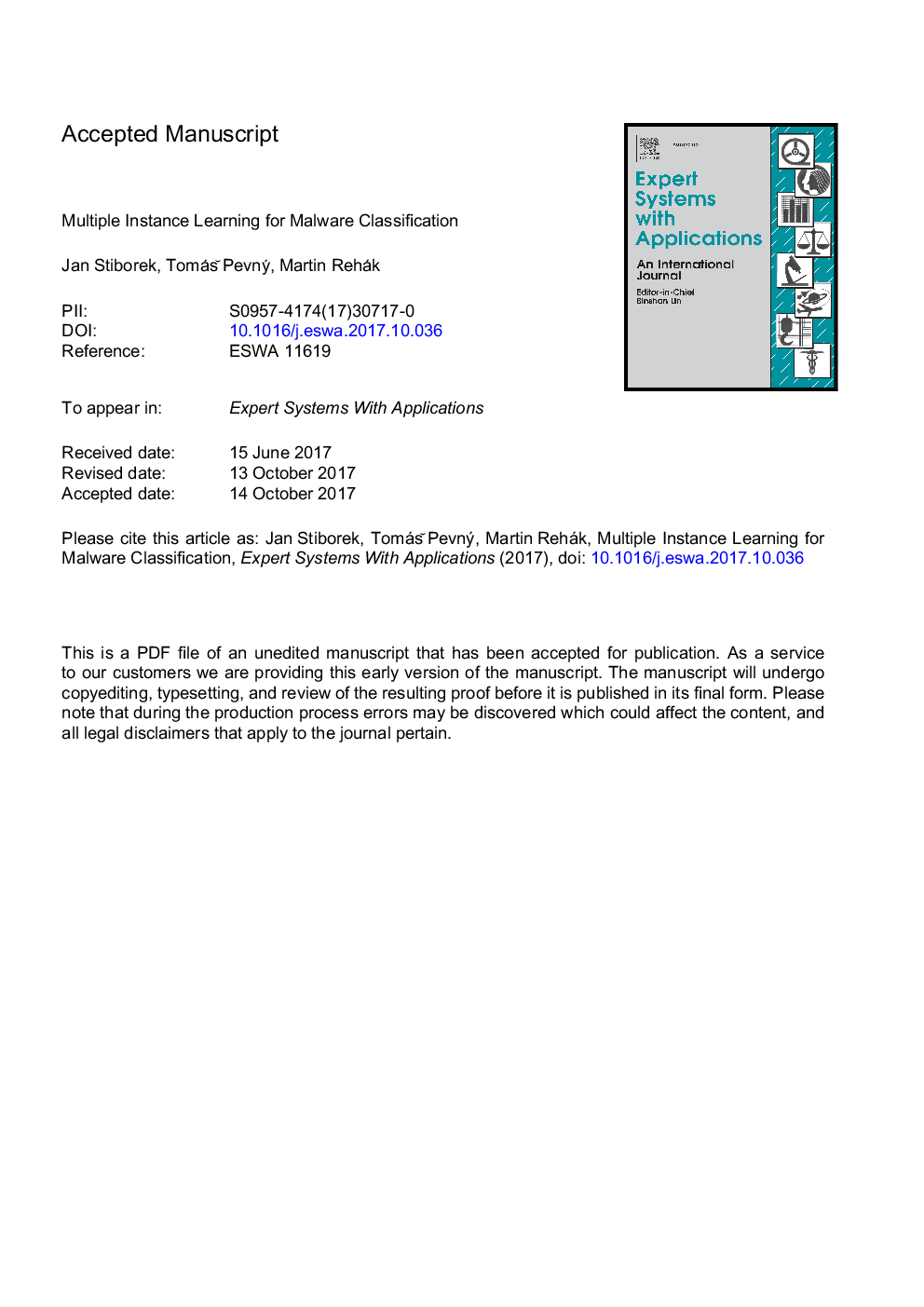| Article ID | Journal | Published Year | Pages | File Type |
|---|---|---|---|---|
| 6855402 | Expert Systems with Applications | 2018 | 33 Pages |
Abstract
This work addresses classification of unknown binaries executed in sandbox by modeling their interaction with system resources (files, mutexes, registry keys and communication with servers over the network) and error messages provided by the operating system, using vocabulary-based method from the multiple instance learning paradigm. It introduces similarities suitable for individual resource types that combined with an approximative clustering method efficiently group the system resources and define features directly from data. This approach effectively removes randomization often employed by malware authors and projects samples into low-dimensional feature space suitable for common classifiers. An extensive comparison to the state of the art on a large corpus of binaries demonstrates that the proposed solution achieves superior results using only a fraction of training samples. Moreover, it makes use of a source of information different than most of the prior art, which increases the diversity of tools detecting the malware, hence making detection evasion more difficult.
Related Topics
Physical Sciences and Engineering
Computer Science
Artificial Intelligence
Authors
Jan Stiborek, TomásÌ Pevný, Martin Rehák,
